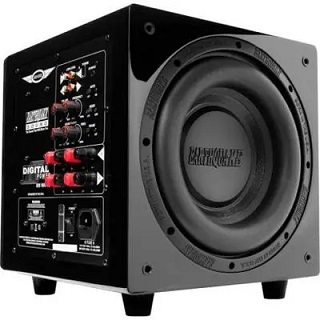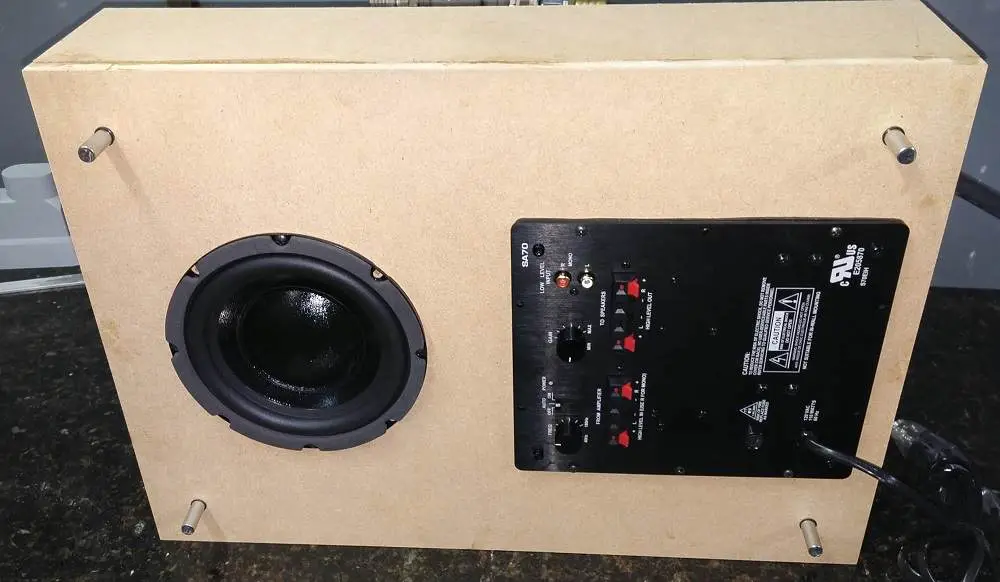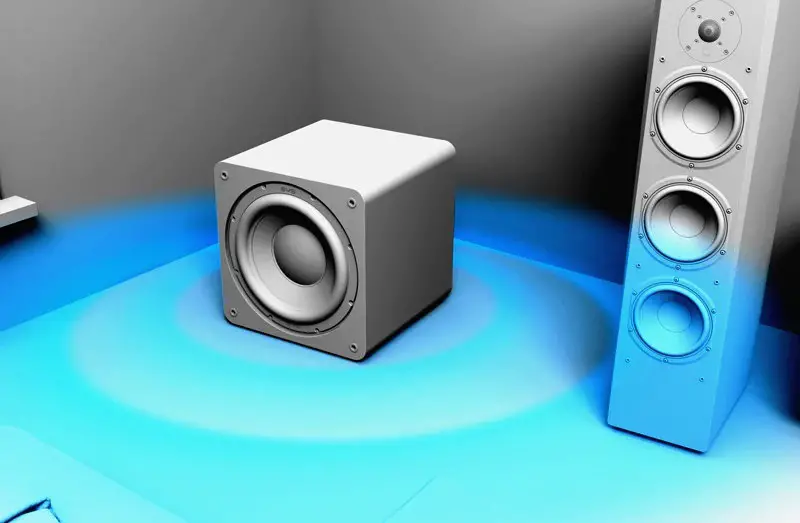A subwoofer is a type of speaker that is specifically designed to reproduce low-frequency sound, also known as bass.
These sounds are responsible for providing the deep, rich, and powerful sound that is often associated with music and movies.

Subwoofers are commonly used in home theater systems and car audio systems to enhance the overall audio experience.
The importance of properly tuning a subwoofer box cannot be overstated.
A poorly tuned subwoofer can result in a boomy, muddy, or even distorted sound that can detract from the overall listening experience.
On the other hand, a properly tuned subwoofer can provide a clear, tight, and powerful bass that will enhance the listening experience.
Understanding the Basics
A subwoofer box, also known as an enclosure, is the housing that surrounds the subwoofer. The enclosure plays a critical role in determining the subwoofer’s performance.
There are several different types of subwoofer enclosures, each with their own characteristics and benefits.
The most common types of enclosures are sealed, ported, and bandpass.
Sealed enclosures, also known as acoustic suspension, are airtight and do not have any ports or vents.
They provide tight, accurate bass and are relatively easy to design and build.
Ported enclosures, also known as bass reflex, have a port or vent that allows air to move in and out of the enclosure.
This can increase the subwoofer’s output but can also result in a boomy or resonant sound.
Bandpass enclosures, also known as fourth-order, use a combination of sealed and ported sections to provide increased output and a more pronounced bass.
The physics behind sound waves also plays a critical role in subwoofer performance.
The movement of air molecules creates sound waves, and these waves can have different frequencies, amplitudes, and phase relationships.
The frequency of a sound wave is measured in Hertz (Hz) and is the number of oscillations per second. The amplitude of a sound wave is measured in decibels (dB) and is the relative loudness of the sound.
The phase relationship of a sound wave is the timing of the wave relative to other waves.

Measuring and Analyzing the Subwoofer
To properly tune a subwoofer, it is essential to measure and analyze the subwoofer’s performance.
The most commonly used tool for this is a sound pressure level (SPL) meter.
An SPL meter can be used to measure the subwoofer’s output in dB at various frequencies.
Another important tool is a real-time analyzer (RTA). An RTA can be used to measure the subwoofer’s output in the frequency domain and can provide a detailed analysis of the subwoofer’s performance.
Additionally, a phase meter can be used to measure the phase relationship of the subwoofer’s output.
When measuring and analyzing the subwoofer, it is essential to pay attention to the subwoofer’s frequency response, distortion, and phase relationship. The frequency response is a measure of the subwoofer’s output at various frequencies.
Distortion is the measure of the subwoofer’s ability to accurately reproduce the input signal.
The phase relationship is the timing of the subwoofer’s output relative to other speakers in the system.
Common issues that can arise when measuring and analyzing the subwoofer include an uneven frequency response, high distortion, and poor phase relationship.
An uneven frequency response can result in a boomy or thin sound. High distortion can result in a distorted or harsh sound.
A poor phase relationship can result in a muddy or indistinct sound.
Tuning the Subwoofer Box
Once you have measured and analyzed the subwoofer’s performance, it’s time to start tuning the subwoofer box.
There are several different methods for tuning a subwoofer box, each with their own advantages and disadvantages.
One of the most popular methods is known as the “carpet method.” This method involves placing the subwoofer on a carpet and measuring the subwoofer’s output at various positions on the carpet.
The position that provides the flattest frequency response and lowest distortion is considered the optimal position for the subwoofer.
Another method is known as “boundary gain compensation.”
This method involves measuring the subwoofer’s output at various positions in the car and taking into account the gain provided by the car’s boundaries, such as body panels and corners.
The position that provides the flattest frequency response and lowest distortion taking into account the boundary gain is considered the optimal position for the subwoofer.
A third method is known as “equalization.” This method involves using a parametric equalizer or graphic equalizer to adjust the subwoofer’s frequency response to provide a flat response and low distortion.
This method requires a more complex setup and a good understanding of equalization, but it can provide very precise results.
Common issues that can arise when tuning a subwoofer box include poor integration with the other speakers in the system, poor soundstage, and poor imaging.
Poor integration can result in a boomy or indistinct sound. Poor soundstage can result in a lack of depth and dimension. Poor imaging can result in a lack of focus and clarity.

Conclusion
Properly tuning a subwoofer box is essential for achieving the best possible sound quality.
By understanding the basics of subwoofer enclosures, measuring and analyzing the subwoofer’s performance, and using the appropriate tuning methods, you can achieve a clear, tight, and powerful bass that will enhance your listening experience.
Remember to experiment with different tuning methods and positions to find the best solution for your specific subwoofer and listening environment.
How do I know if my subwoofer box is properly tuned?
To determine if your subwoofer box is properly tuned, you should measure and analyze the subwoofer’s performance using an SPL meter, RTA, and phase meter.
Look for a flat frequency response, low distortion, and a good phase relationship.
Additionally, listen for a clear, tight, and powerful bass that enhances the overall listening experience.
What is the difference between a sealed, ported, and bandpass subwoofer enclosure?
A sealed subwoofer enclosure, also known as an acoustic suspension, is an airtight enclosure that does not have any ports or vents.
It provides tight, accurate bass and is relatively easy to design and build.
A ported subwoofer enclosure, also known as a bass reflex, has a port or vent that allows air to move in and out of the enclosure. This can increase the subwoofer’s output but can also result in a boomy or resonant sound.
A bandpass subwoofer enclosure, also known as a fourth-order, uses a combination of sealed and ported sections to provide increased output and a more pronounced bass.
Can I use a software-based RTA instead of a hardware-based RTA?
Yes, it is possible to use a software-based RTA instead of a hardware-based RTA. Software-based RTAs are typically less expensive and can be used with a laptop or mobile device.
However, it’s important to ensure that the software you are using is accurate and reliable.
Can I use a subwoofer box that is not specifically designed for my subwoofer?
It is possible to use a subwoofer box that is not specifically designed for your subwoofer, but it’s not recommended.
Subwoofer enclosures are designed to work with specific subwoofers and can have a significant impact on the subwoofer’s performance.
It is recommended to use an enclosure that is designed for your specific subwoofer.
Can I use multiple subwoofers in a single enclosure?
It is possible to use multiple subwoofers in a single enclosure, but it can be challenging to achieve optimal performance.
When using multiple subwoofers, it’s important to ensure that they are properly wired and phase-aligned to avoid cancellation and other issues.
Additionally, you may need to use a larger enclosure and more powerful amplifier to accommodate multiple subwoofers.
It is recommended to consult with a professional or seek advice from a knowledgeable individual in the field before attempting to use multiple subwoofers in a single enclosure.
